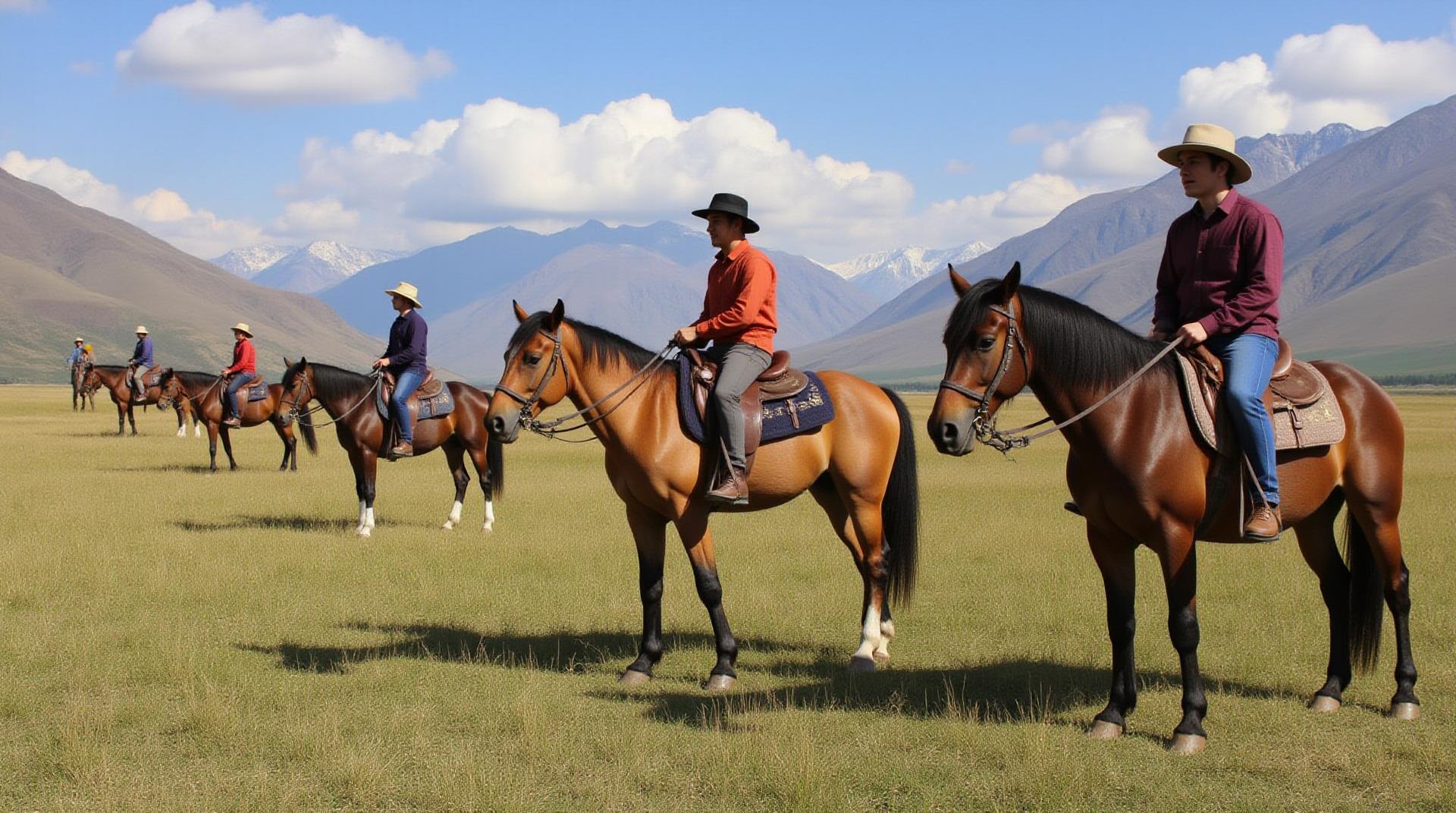Solo in Kyrgyzstan: Horse Trekking Through the Mountains

Solo in Kyrgyzstan: Horse Trekking Through the Mountains
Kyrgyzstan, the landlocked nation nestled in Central Asia, is quickly becoming a haven for solo travellers, particularly those seeking breathtaking natural beauty and a unique cultural experience. If you’re itching to escape the ordinary and experience the wild side of travel, then horse trekking through the mountains might be your perfect adventure.
Why Solo Horse Trekking in Kyrgyzstan?
Kyrgyzstan offers an unparalleled adventure for solo travellers. The land’s wide open spaces, dramatic landscapes, untouched by tourists, and friendly local population create an intimate and carefree atmosphere perfect for forging connections with yourself.
Benefits of Horse Trekking through the Mountains
* **Beauty Unbound:** Kyrgyzstan is a photographer’s paradise. Picture yourself exploring dramatic mountain ranges, cascading waterfalls, vibrant alpine meadows, and crystal-clear lakes filled with azure water, all spanning an expanse untouched by city-dweller crowds.
* **Immersive Cultural Encounter:** Expect to be welcomed into the homes of local families, sharing traditional food, sharing stories, and listening to Kyrgyz folk tales that linger in your heart and inspire your soul.
* **Physical and Mental Glow-Up:** Embrace adventure, experience the majestic landscape, challenge yourself physically, and rejuvenate your mind. The connection with nature and the tranquility of horse riding fosters reflection and inner peace.
* **Authentic Experience:** With a guide and a few fellow travellers, you’ll experience the essence of Kyrgyzstan’s customs and traditions in a way you might never otherwise imagine.
Best Places to Visit for Horse Trekking
- The Ala-Archa Valley National Park:** This is a haven for trekkers and hikers, offering both easy and challenging trails. Its stunning glaciers, turquoise lakes, and breathtaking views are a must-see.
- The Issyk-Kul Lake Region:** Kyrgyzstan’s largest lake, with hundreds of pristine lakes around it. Explore the diverse landscapes, experience the tranquility of surrounded by water mountains, and explore the surrounding villages and local crafts.
- Song-Kul Area: Experience serene lakes and pristine landscapes. The nomadic culture and vibrant costumes of the Kyrgyz people are mesmerizing.
Practical Tips for Solo Horse Trekking in Kyrgyzstan
- Booking in advance:** Since a horse trek is a unique adventure, book hiking and guide services to the region in advance. This takes the fear of the unknown off your shoulders.
- Pack Minimal:** Consider the weather and terrain. Of course, essentials are a must, but keep lightweight garments and plan for varying weather conditions
- Learn basic Kyrgyz Phrases: Being able to acknowledge greetings and basic needs like, “Thank you,” “I don’t understand,” or “Do you speak English” goes a long way.
Solo travel in Kyrgyzstan’s mountainous area offers an unforgettable experience, leaving a lasting impression on the mind. Embrace the wilds, connect with the culture, and unleash the freedom of becoming one with the majestic beauty of Kyrgyzstan.
Check similar topics:
“`html
FAQs
Here are some answers to frequently asked questions about solo trekking in Kyrgyzstan:
Is it safe to trek solo in Kyrgyzstan?
Kyrgyzstan is generally considered a safe country for solo travelers. The locals are friendly and hospitable, and the country has a low crime rate. Do some research and plan your route carefully, and you should be able to have a safe and memorable experience.
What kind of gear do I need for solo trekking in Kyrgyzstan?
- Comfortable boots: Choose high-quality, waterproof boots that provide good ankle support.
- Backpacking backpack: Select a comfortable, lightweight backpack that fits your frame well.
- Waterproof clothing : Kyrgyzstan’s weather can be unpredictable, so layering is essential. Pack waterproof jackets and pants.
- Sleeping bag and pad: Choose an appropriate temperature rating sleeping bag and sleeping pad for unpredictable weather.
- Sun protection: Sunglasses, a hat, and sunscreen are crucial in the high-altitude environment.
- First-aid kit : You can purchase supplies upon arrival, but a basic first-aid kit is important.
What is the best time to travel solo trekking in Kyrgyzstan?
The peak trekking season in Kyrgyzstan is typically from June to August, during which the weather is warm and comfortable. However, the shoulder seasons (May and September) offer pleasant temperatures and fewer crowds.
How do I get around in Kyrgyzstan?
Kyrgyzstan has a developed public transportation system, and buses and jeepneys can take you from one destination to another. You can also arrange pre-booked private transportation services. Renting a car is also an option for independent exploration.
What are some popular solo trekking destinations in Kyrgyzstan?
Kyrgyzstan offers a wide range of trekking options, from scenic passes and high-alpine meadows to rugged mountain ranges. Here are a few popular destinations:
- Lake Issyk-Kul & Ala-Archa National Park : Stunning vistas of alpine meadows, pristine lakes, and soaring mountains.
- Tian-Shan Mountain Range: Offering panoramic views, challenging passes, and unique cultural opportunities.
- The Silk Road Route: Discover ancient ruins, cultural sites, and historical landmarks.
How much does a solo trekking trip in Kyrgyzstan cost?
The cost of a solo trekking trip in Kyrgyzstan varies depending on the length of your trip, the locations you choose to visit, and your level of comfort and accommodation. Generally, expect to pay between $50 to $150 per day, depending on your choices from basic camping arrangements to comfortable guesthouses.
“`
**Important Notes:**
* Be sure to check visa requirements for your nationality before traveling to Kyrgyzstan.
* Always research and plan your itinerary carefully, paying attention to weather conditions and local safety advice.
* When carrying out research, consult dedicated trekking guides and adventure tour websites for more specific and practical information.
Let me know if you would like me to expand on any of these FAQ topics!